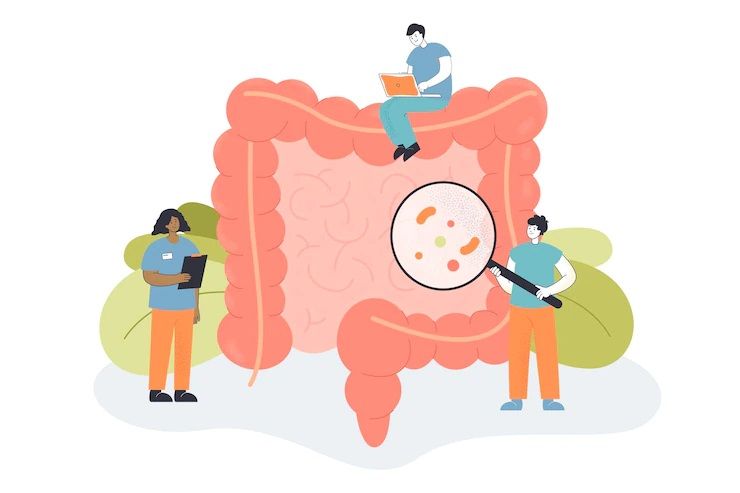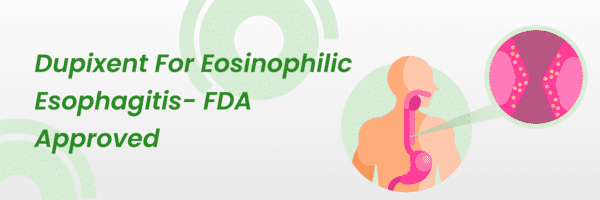Overview
Living with a chronic illness can be one of life's greatest challenges, and for those diagnosed with Inflammatory Bowel Disease (IBD), the journey is often filled with unique complexities. IBD is a term used to describe two major chronic digestive disorders: Crohn's disease and ulcerative colitis. While both can be debilitating, understanding their unique characteristics and the holistic nature of their management is the first and most critical step toward living a full and healthy life. These conditions affect millions of people worldwide, impacting not just the digestive system but overall well-being.
What Are Crohn's Disease and Ulcerative Colitis?
Crohn's disease and ulcerative colitis are autoimmune conditions that cause chronic inflammation of the gastrointestinal (GI) tract. While they can be diagnosed at any age, they are most often identified in young adults. The key difference between the two lies in the location and nature of the inflammation, which determines the symptoms and treatment approach.
While the exact cause of IBD remains unknown, it is believed to be a combination of genetic factors, an overactive immune system response, and environmental triggers such as diet, smoking, and certain medications. The "hygiene hypothesis," for instance, suggests that reduced exposure to microbes in modern life may contribute to a malfunctioning immune system. It's an intricate puzzle that researchers are still working to solve.
The Gut Microbiome and IBD
Recent research has shed light on the critical role of the gut microbiome in IBD. This ecosystem of trillions of microorganisms living in your digestive tract is essential for breaking down food, producing vitamins, and maintaining a healthy immune response. In individuals with IBD, the gut microbiome is often less diverse and less stable, with a lower abundance of beneficial bacteria and a higher presence of inflammatory ones. This imbalance is believed to contribute to the ongoing inflammation, and new treatments are being developed to target this delicate ecosystem.
Common Symptoms and the Diagnostic Journey
The symptoms of IBD are diverse and can mimic other digestive disorders, which is why an accurate diagnosis is so important. While the severity depends on the area of the GI tract affected, common symptoms include:
- Abdominal Pain and Cramping: This can be mild or severe and often feels like sharp, stabbing pains or dull, constant aches. In Crohn's disease, it may indicate a blockage or stricture, while in UC, it's often linked to the inflamed colon's muscle contractions.
- Persistent Diarrhea: The most common symptom, which can be watery or, particularly in ulcerative colitis, contain blood and pus. This is caused by the inflamed bowel's inability to absorb water properly.
- Fatigue and Fever: Chronic inflammation is a significant drain on the body's energy reserves, leading to profound and often debilitating fatigue. A low-grade fever may indicate a flare-up or an infection.
- Unintended Weight Loss: This can result from a reduced appetite, malabsorption of nutrients due to inflammation, or the body's increased metabolic demand to fight chronic inflammation.
- Reduced Appetite: Often a consequence of pain, nausea, and general malaise.
Licensed by Google
Diagnosis typically involves a combination of methods. A doctor will start with a detailed review of symptoms and medical history. Then, a series of tests are performed:
- Blood and Stool Tests: Blood tests check for markers of inflammation (like C-reactive protein), anemia, and nutrient deficiencies. Stool tests look for blood, signs of infection, and other markers of inflammation.
- Endoscopic Procedures: A colonoscopy is the gold standard for diagnosing IBD. Using a flexible tube with a camera, a doctor can visually inspect the entire colon and take tissue samples (biopsies) to confirm inflammation and rule out other conditions. For Crohn's disease, an upper endoscopy may also be performed to examine the stomach and small intestine.
- Imaging Tests: Techniques like MRI, CT scans, and a capsule endoscopy can provide a detailed view of the small intestine and other parts of the GI tract that are not accessible via a colonoscopy.
Managing Flare-Ups and Achieving Remission
Living with IBD means preparing for periods of remission, when symptoms are quiet, and dealing with occasional flare-ups. A multi-pronged approach involving medical treatment, lifestyle adjustments, and self-care is crucial. For more detailed strategies and tips on how to manage symptoms and regain control during a flare-up, you can read our comprehensive guide on managing ulcerative colitis flare-ups.
Medical Management
Medical treatment for IBD is highly personalized and aims to reduce inflammation, alleviate symptoms, and achieve long-term remission. The choice of medication depends on the type, location, and severity of the disease.
- Aminosalicylates (5-ASAs): These are anti-inflammatory drugs often used for mild to moderate UC. They work by reducing inflammation in the colon's lining.
- Corticosteroids: Powerful anti-inflammatory medications used for short-term control of severe flare-ups. They are not recommended for long-term use due to significant side effects.
- Immunosuppressants: These medications work by suppressing the immune system's inflammatory response. They are often used for long-term management to maintain remission.
- Biologics and Biosimilars: A newer class of medications that target specific proteins in the immune system to interrupt the inflammatory pathway. They are highly effective for moderate to severe disease.
Dietary and Lifestyle Adjustments
While diet doesn't cause IBD, it can significantly impact symptoms. During a flare-up, it is often helpful to:
- Adjust your diet: Certain foods can aggravate an inflamed gut. While it varies for each person, common culprits include high-fiber foods (like raw fruits and vegetables), spicy foods, dairy, and high-fat foods. It is often recommended to consume a low-residue diet to give the bowel a rest.
- Stay hydrated: Diarrhea can lead to severe dehydration and electrolyte imbalance. It is crucial to drink plenty of water, broth, and other non-caffeinated, non-carbonated fluids.
- Manage stress: The gut-brain axis means stress doesn't cause IBD, but it can certainly worsen symptoms. Mindfulness, meditation, and exercise can help manage it.
- The Mind-Body Connection: Stress management is critical for IBD. The gut-brain axis, a complex network of nerves connecting the digestive system to the brain, means emotional stress can trigger a physical inflammatory response. Practices like meditation, deep breathing, and gentle yoga can help calm this response and reduce symptoms.
The Systemic Impact: Extraintestinal Manifestations (EIMs)
A key characteristic of IBD is that it is a systemic disease, meaning it can affect other parts of the body outside of the GI tract. These are known as extraintestinal manifestations (EIMs) and can sometimes appear even before digestive symptoms. According to a study on extraintestinal manifestations in IBD, a significant portion of patients may experience these symptoms.
- Joint Pain: Arthritis is one of the most common EIMs, causing pain, swelling, and stiffness, often in large joints like the knees and ankles.
- Skin Rashes: Conditions like pyoderma gangrenosum (painful, ulcerated sores) and erythema nodosum (tender, red nodules) can appear on the skin.
- Eye Inflammation: The eyes can become inflamed, leading to conditions like uveitis and episcleritis, which can cause pain, redness, and blurred vision.
- Liver Issues: Inflammation can also affect the liver and bile ducts, leading to conditions like primary sclerosing cholangitis.
This systemic reach underscores the importance of a multidisciplinary care team, including not just a gastroenterologist but also a rheumatologist, dermatologist, or ophthalmologist, to manage all aspects of the disease.
Conclusion
Living with IBD is a journey, but it is not one you have to take alone. Having a strong support system, a dedicated healthcare team, and the right information is key to navigating its challenges. While there is currently no cure, effective management through medication, a tailored diet, and a proactive lifestyle can help you achieve long-term remission and dramatically improve your quality of life. By staying informed, listening to your body, and working closely with your healthcare team, you can take control of your health and not just cope with IBD, but truly thrive.






